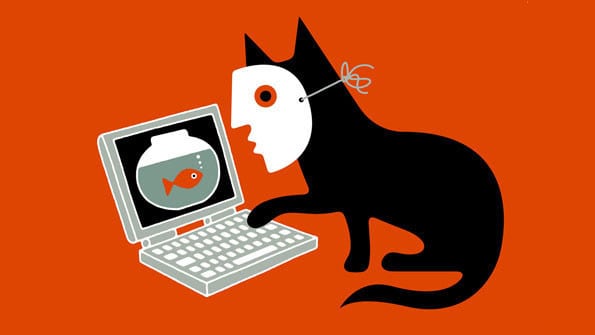Multiple social media accounts masquerading as real are impostors, making this another downside of the virtual world that can lead to bullying, defrauding, stalking and blackmailing
Imagine that your phone pings one afternoon with a follow request from an attractive stranger. Do you hit ‘confirm’ or ‘reject’? According to the global online data portal Statista, an average person has at least 7.6 active social media accounts, with 98 per cent of those people having at least one social network account. With that said, ‘catfishing’ — the act of creating one or more fake social media accounts in order to target others on the platform for bullying, romantic scams, business scams, or sometimes to simply gain attention — has been rampant since the past few years. The term catfishing comes from the practice of storing catfish in vats, along with cod. When cod need to be transported long distances, the fishermen keep them in vats and throw some catfish with it, which helps to keep the cod agile and keep them from becoming mushy by the time the fishermen reach the destination. Social media catfishes gain their name as they keep the online community constantly weary and on their toes.
Legally, catfishes are in the clear — it is not illegal to impersonate on the Internet. However, the possible crimes committed under that fake name may see legal repercussions. There is no mechanism to check the authenticity of newly created accounts on social networking sites, which is why so many of them are surfacing quite regularly. Making a fake account is not at all uncommon. Certain websites require the user to be of a certain age before specific content is made available to them, to facilitate this, teenagers create fake accounts as adults to bypass that roadblock.
A former catfish, 23-year-old now, says that he did it because he was an angry child. “I’m definitely ashamed of it. But I do remember how angry I used to be all the time. I felt like I could lash out at all my school bullies through Facebook, Orkut and stuff, so I did. It gave me some sort of power because they didn’t know who I was.” As a teenager, his school life was difficult — he didn’t have many friends and was not popular in his class. Getting back at the people poking fun at him through social media seemed like the ‘smart thing to do’ at the time. “Looking at how fake accounts and catfishing has become a trend now, I do think I might have indulged in something that could possibly have had larger implications if it went wrong,” he admits.

Catfishing is even more popular on dating websites. One such dating website based in UK called FreeDating conducted surveys and proved that one out of every ten online dating profiles are fake — starting from the profile image to the information provided. The catfish use this fake information to bait someone else on the platform, and these then have the potential to develop into a number of scenarios.
Exchanging of personal information with someone the user thinks is genuine can lead to stalking; people have often maintained long distance relationships with individuals they met on Tinder, without ever having met them, not knowing that they were interacting with a fake account. Users share personal images with people they meet online before first confirming the accounts as authentic, and such cases have led to long term bullying and blackmailing for them, mostly women.
Despite the fact that women are the likely targets of catfishing, statistics show that those with the most number of fake accounts are in fact women. In 2015, a lady in Chechnya was contacted by the ISIS to leave her life and join the terror group. In turn she, along with two other Chechen women, catfished the ISIS and conned them out of 2,000 pounds, posing as three women who wanted to become jihadi brides.
“I’ve been catfished many times on Tinder,” says Tanisha, a 21-year-old. Most interactions on Tinder start with a profile picture and the bio provided on the profile, which makes it tough to tell the fakers from the authentic ones. “I’ve gotten close to some people on Tinder, and then later realised that they were fake accounts. They would refuse to talk on the phone or meet in person. Those are the red flags,” she says, adding, “I’ve been asked for nudes too, on Tinder. The internet is a weird space sometimes.”
There are some ways to be avoid being catfished. One can be a little more paranoid and vigilant. Checking the personal accounts of requests or messages from unknown people is primary — if they do not have any listed common friends or pictures that are not tagged, they might be fake. If the account activity is sparse, checking if the information available is authentic also helps. Another common tip is that one should avoid accepting requests for the sake of increasing their social media following. ‘I remember being catfished on Facebook once, the guy’s profile picture was a cartoon character,” recalls Shreya. “This guy pretended to be an ex-student of the school I went to, and kept asking me questions about myself — what I did, what my interests were, and who I hung out with. But every time I tried to ask him something about him to figure out if I knew him, he’d evade the question. That’s when I blocked him.” She even pointed out that some people use social media solely for the purpose of making friends, and in that process too, they find themselves catfished. “It’s sad because while the internet is supposed to be a free space, it is also dangerous,” she adds. Catfishing can often translate to stalking and blackmailing for the victim.
There have been television series and documentaries made on catfishing, but the trend itself has shown very little signs of dying out. “What really bothers me is that anyone can be catfished by anyone, as long as they are using social media. Unless you are careful about every Internet interactions that you have and never let your guard down, there is no way to avoid it .”





